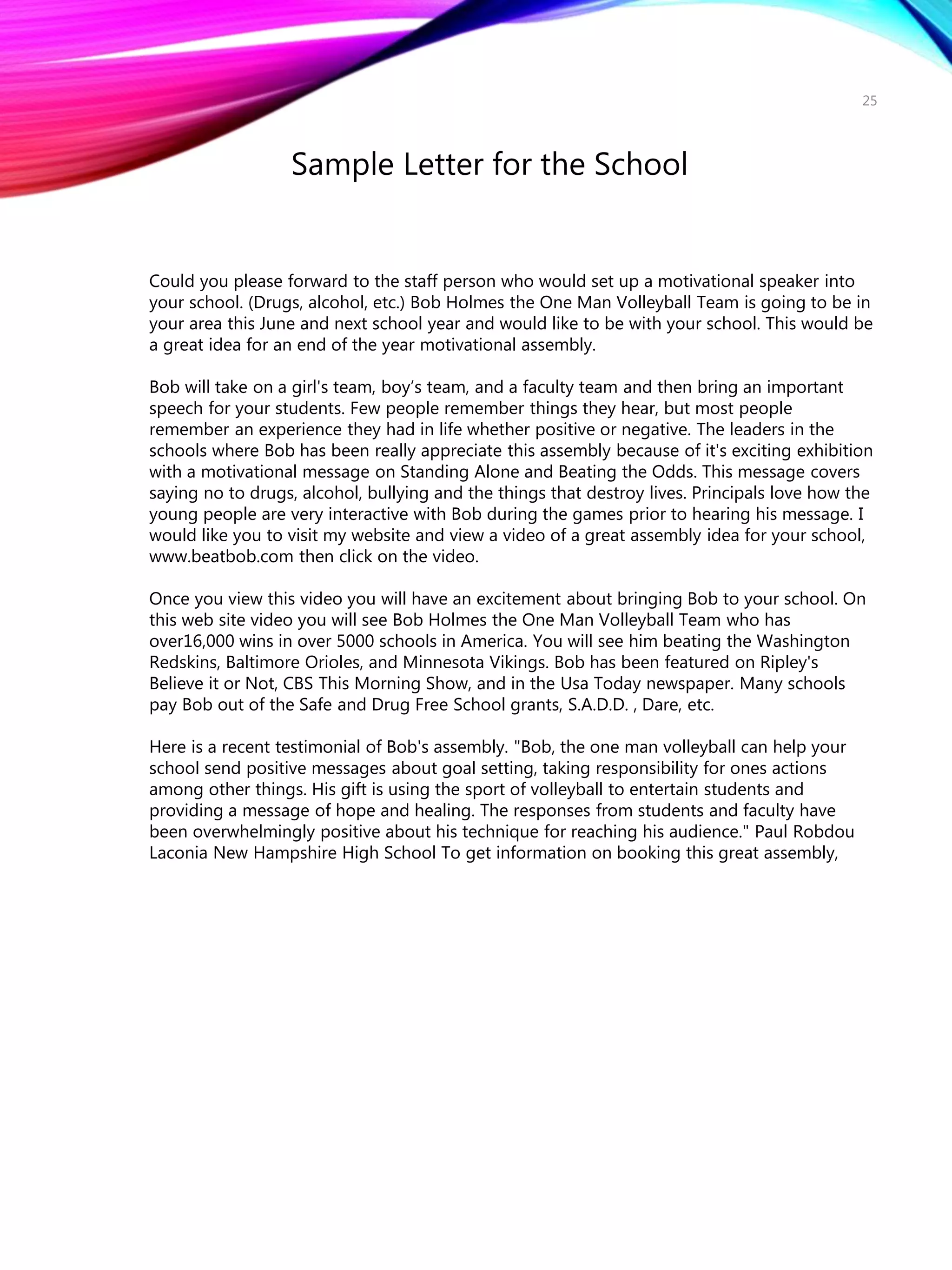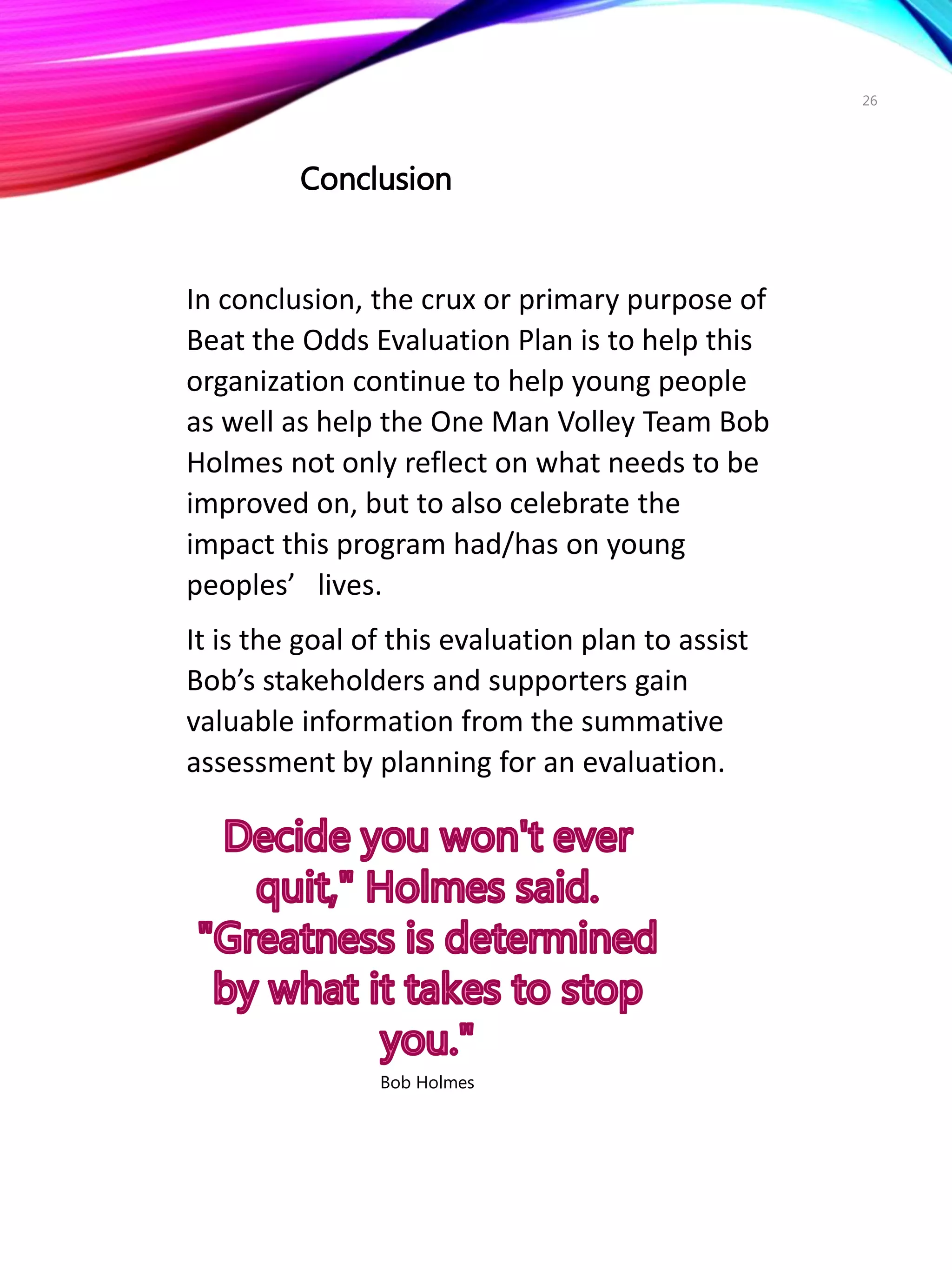This document provides an evaluation plan for Bob Holmes' "One Man Volleyball" teen suicide prevention program. The evaluator chooses to use a consumer-oriented model to evaluate the program's effectiveness. The evaluation will use summative methods to assess outcomes and help secure future bookings. Key stakeholders include teens, parents, educators, and program sponsors. The rise in youth suicide and lack of research on prevention program effectiveness provides context for the evaluation.
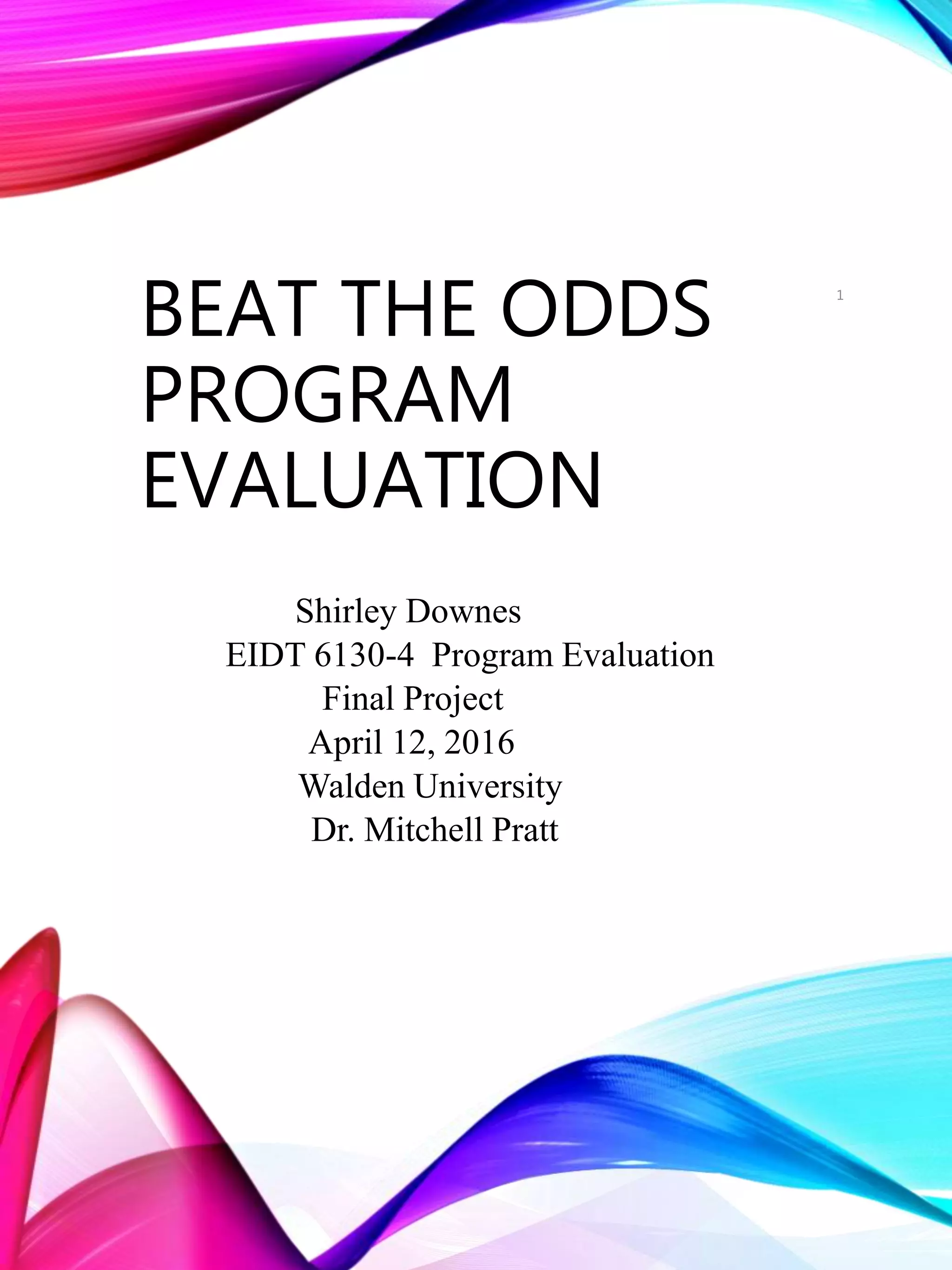
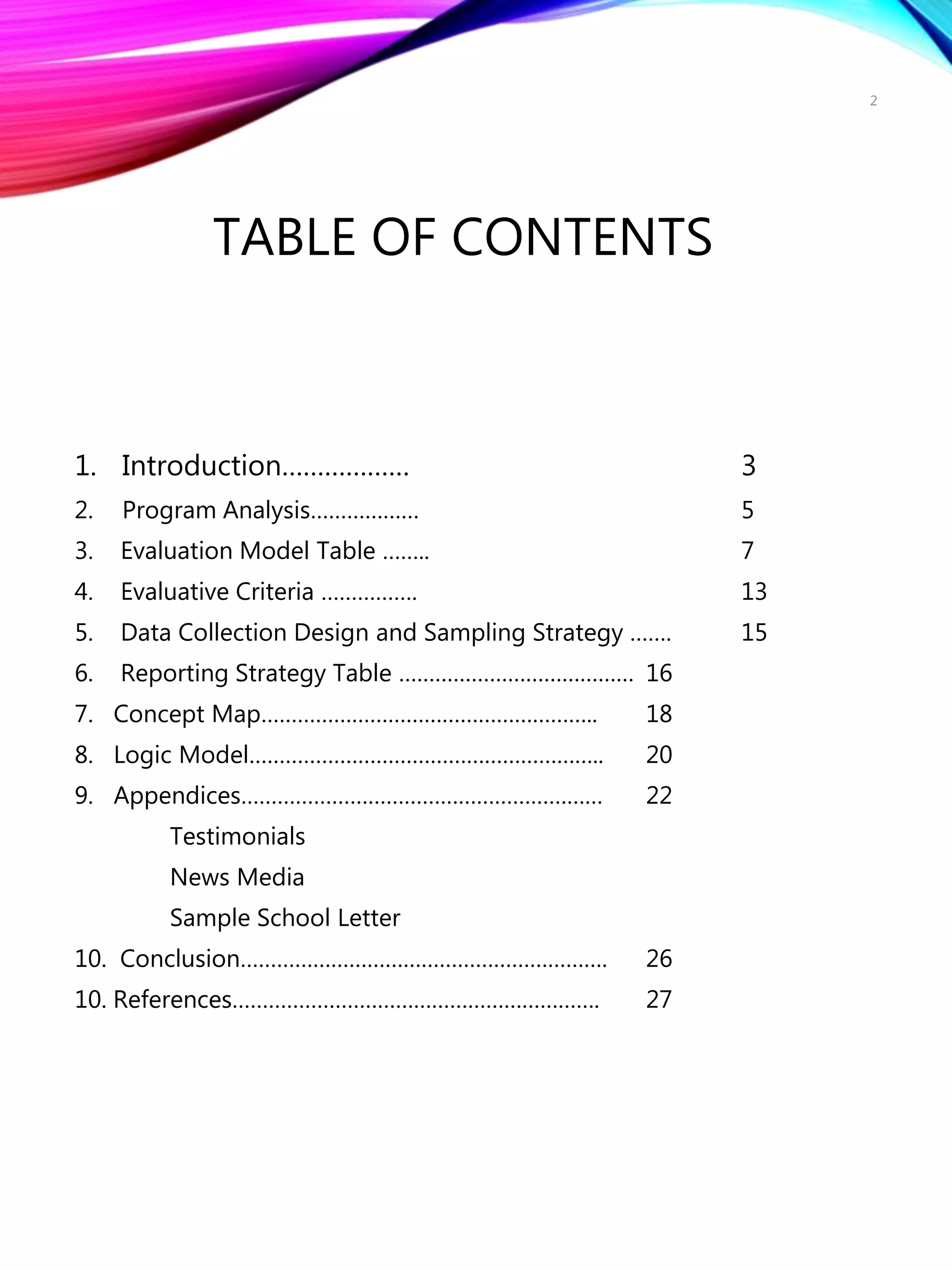
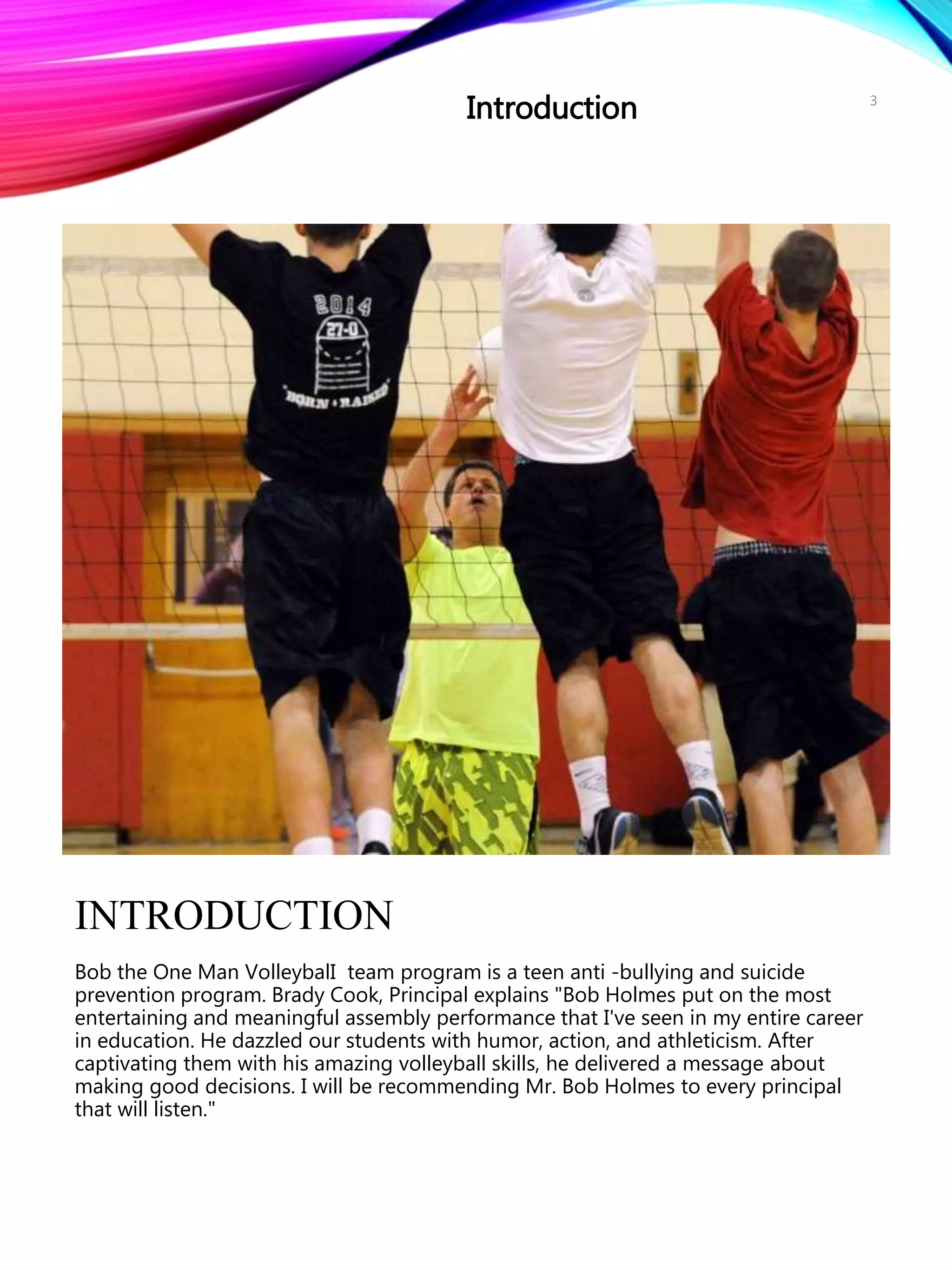
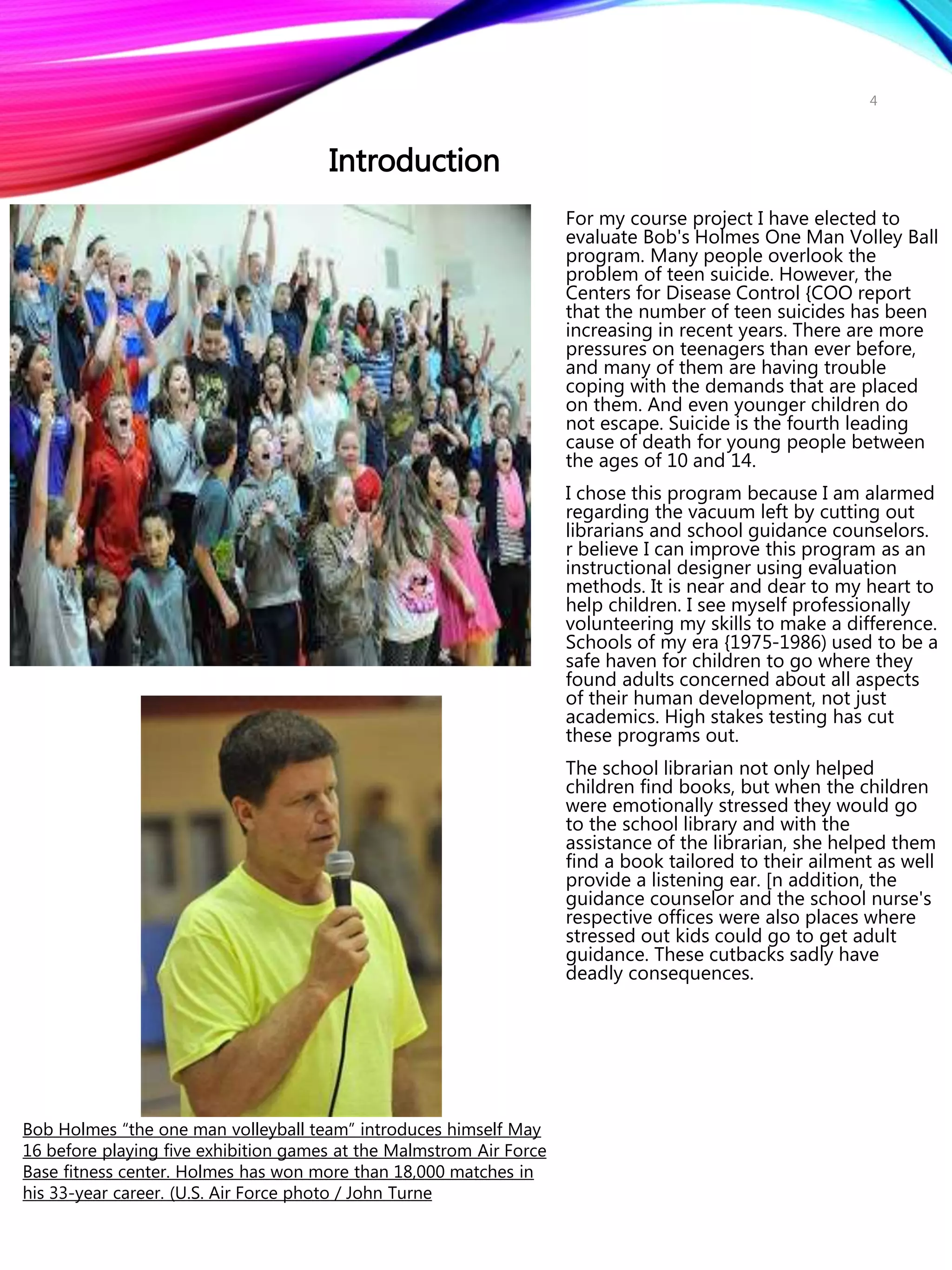
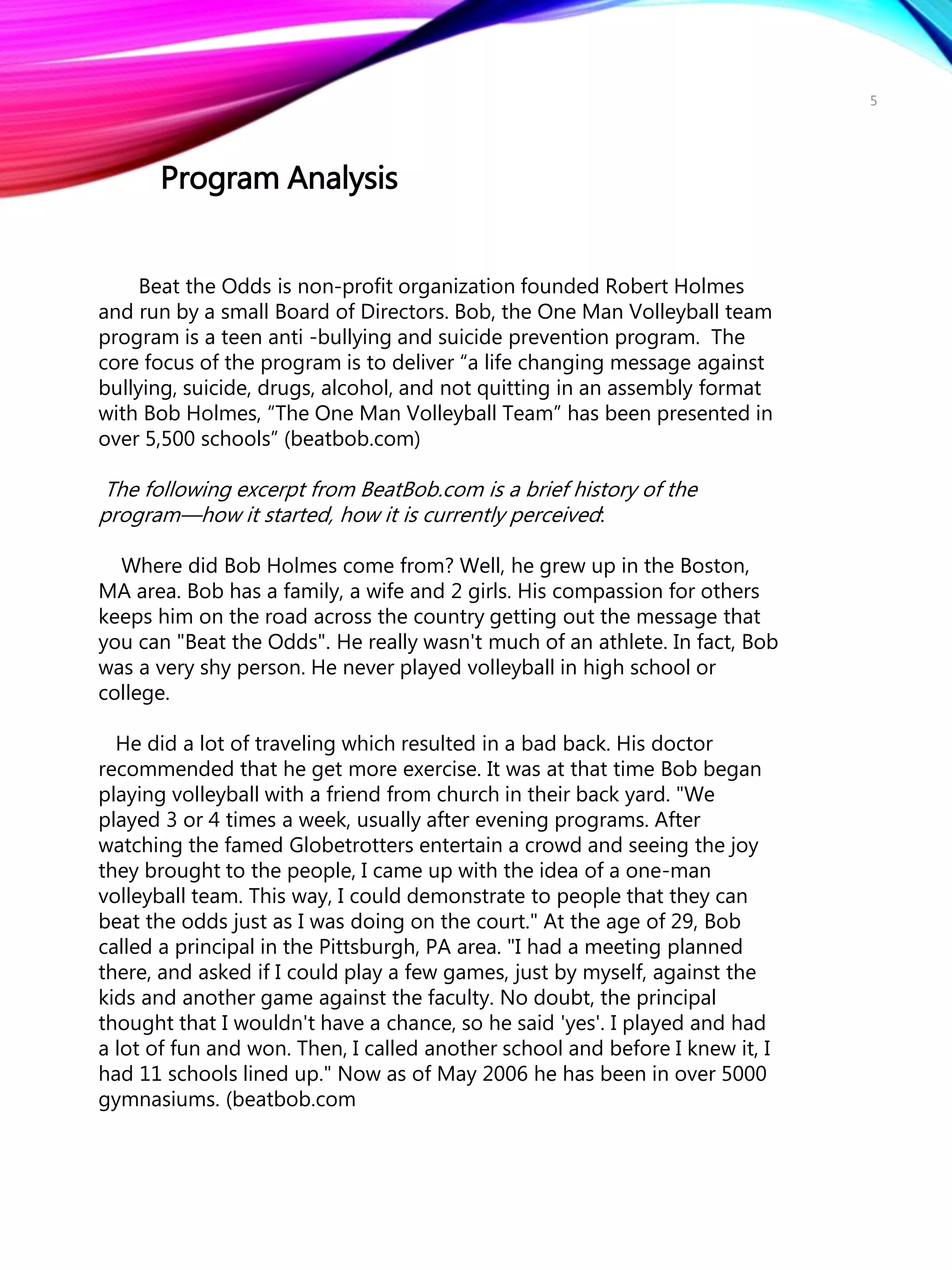
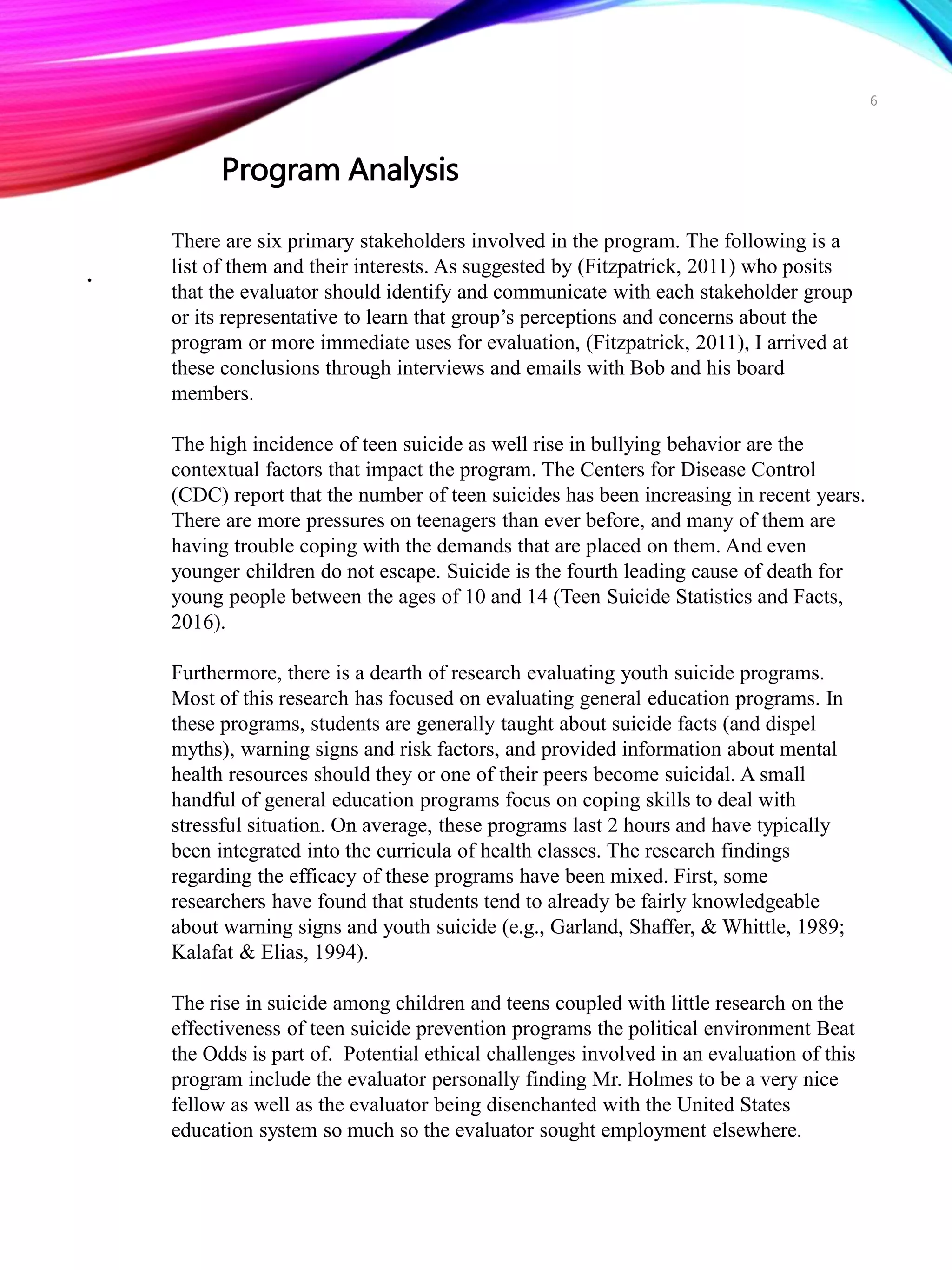
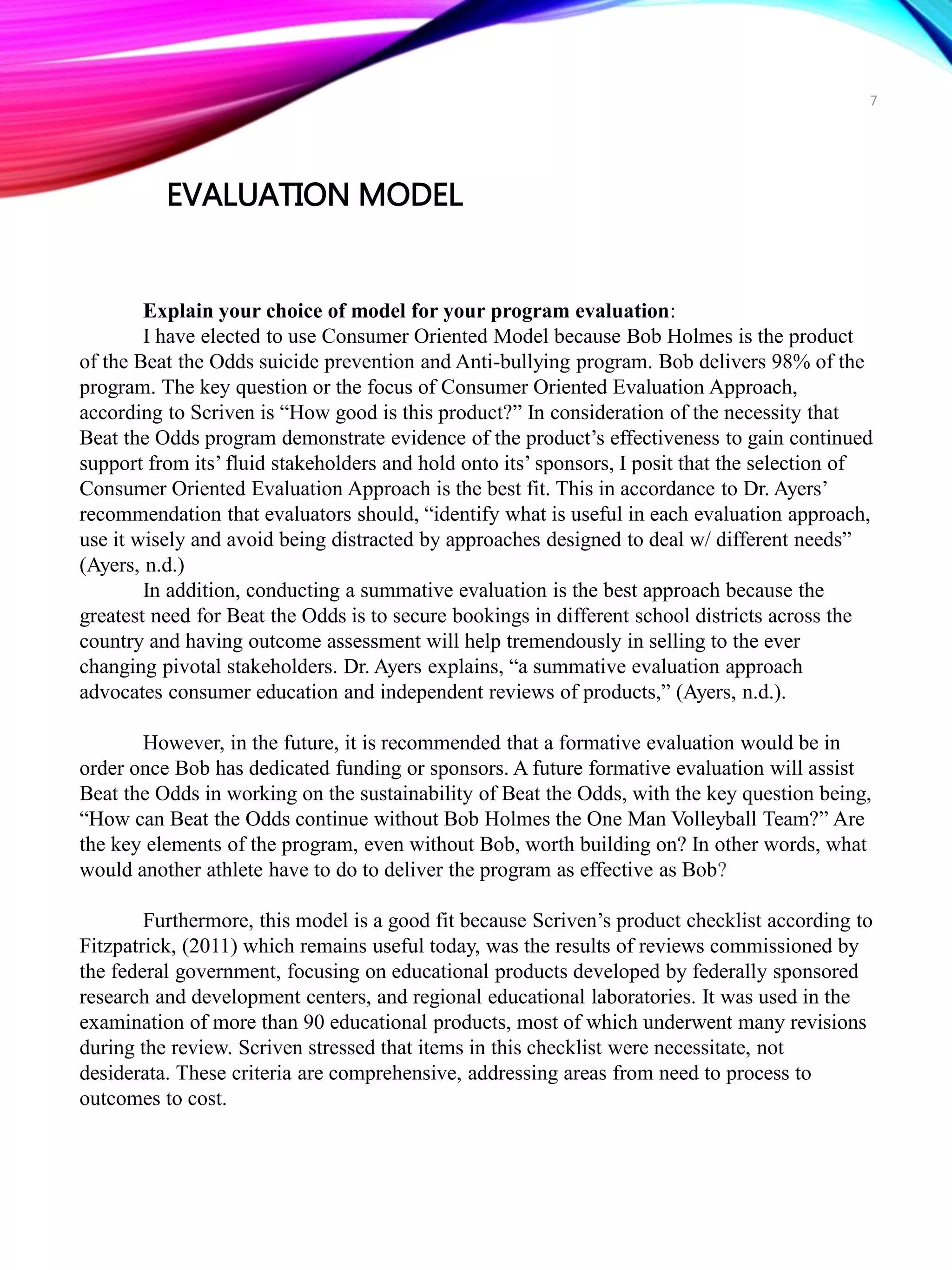
![.
Expertise [Eisner] Approach
Evaluation
Model Advantages Disadvantages
Depends primarily upon professional expertise to
judge an institution, program, product, or activity.
This is the first view that relies heavily on subjective
expertise as the key evaluation tool/
Approaches are:
Doctoral exams, board reviews, accreditation,
reappointment/tenure reviews etc.…
Formal Review Systems (accreditation); existing
structure, standards exist, set review schedule,
experts, status
usually affected by results
Informal Review systems (grad S committee)
Existing structure, no standards, infrequent schedule,
experts, status usually affected
Ad hoc panel review (journal reviews)
Multiple opinions, status sometimes
Ad hoc individual review (consultant)
Evaluator’s skillset includes practical
knowledge, observational skills, and
breadth of view and control of bias. It
employs expert judgement, experience
and human wisdom (Fitzpatrick, 2011)
Valuable info given to those who don’t
have time to study, advance
consumers’ knowledge of appropriate
criteria for selection of
programs/products (Ayers, n.d.)
Justification of experts themselves; the
critic’s principles, or criticism because of
the demands of fairness and justice
Abandons requirement of validity
(Fitzpatrick, 2011)
Whose standards? (personal bias),
expertise credentials, can this approach
be used with issues of classroom life,
texts, and other evaluation objects or
only with the bigger institutional
questions? (Ayers, n.d)
Criteria could be narrow and the
standards to assess the criteria limited in
range; this approach is
not discussed extensively in the
professional evaluator literature
(Fitzpatrick,2011)
EVALUATION MODEL
8](https://image.slidesharecdn.com/educ6130-4programevaluationfinalproject-160619030333/75/Educ-6130-4-program-evaluation-final-project-8-2048.jpg)
![Evaluation
Model Advantages Disadvantages
Evaluators’ expertise in judging key components
of the product which helps others to perceive,
and experience key elements asking How good
this product is? determines important criteria in
evaluating product, establishing standards for
criteria,
examining and measuring performance of products
and its competitors against the criteria using the
standards and synthesizing the results, mostly
formative for industries; summative for consumers
(Fitzpatrick, 2011)
As a summative evaluation approach it advocates
consumer education and independent reviews of
products Scriven’s contributions based on
groundswell of federally funded educational
programs
in 1960s Differentiation between
formative/summative
eval (Ayers, n.d)
Approaches are:
EPIE: Educational Products Information
Exchange Independent product-reviewer
service
CMAS: Curriculum Materials Analysis System
checklist: Describe product, analyze rationale,
consider: antecedent conditions, content,
instructional theory & teaching strategies, form
overall judgments
Evaluator’s skillset includes
practical knowledge, observational
skills, and breadth of view and
control of bias. It employs expert
judgement, experience and human
wisdom (Fitzpatrick, 2011)
Valuable info given to those who
don’t have time to study, advance
consumers’ knowledge of
appropriate criteria for selection of
programs/products (Ayers, n.d.)
Justification of experts themselves;
the critic’s principles, or criticism
because of the demands of fairness
and justice Abandons requirement of
validity (Fitzpatrick, 2011)
Whose standards? (personal bias),
expertise credentials, can this
approach be used with issues of
classroom life, texts, and other
evaluation objects or only with the
bigger institutional questions?
(Ayers, n.d)
Criteria could be narrow and the
standards to assess the criteria
limited in range; this approach is
not discussed extensively in the
professional evaluator literature
(Fitzpatrick,2011)
Consumer-Oriented Approach [Scriven, 1960’s]
EVALUATION MODEL
9](https://image.slidesharecdn.com/educ6130-4programevaluationfinalproject-160619030333/75/Educ-6130-4-program-evaluation-final-project-9-2048.jpg)
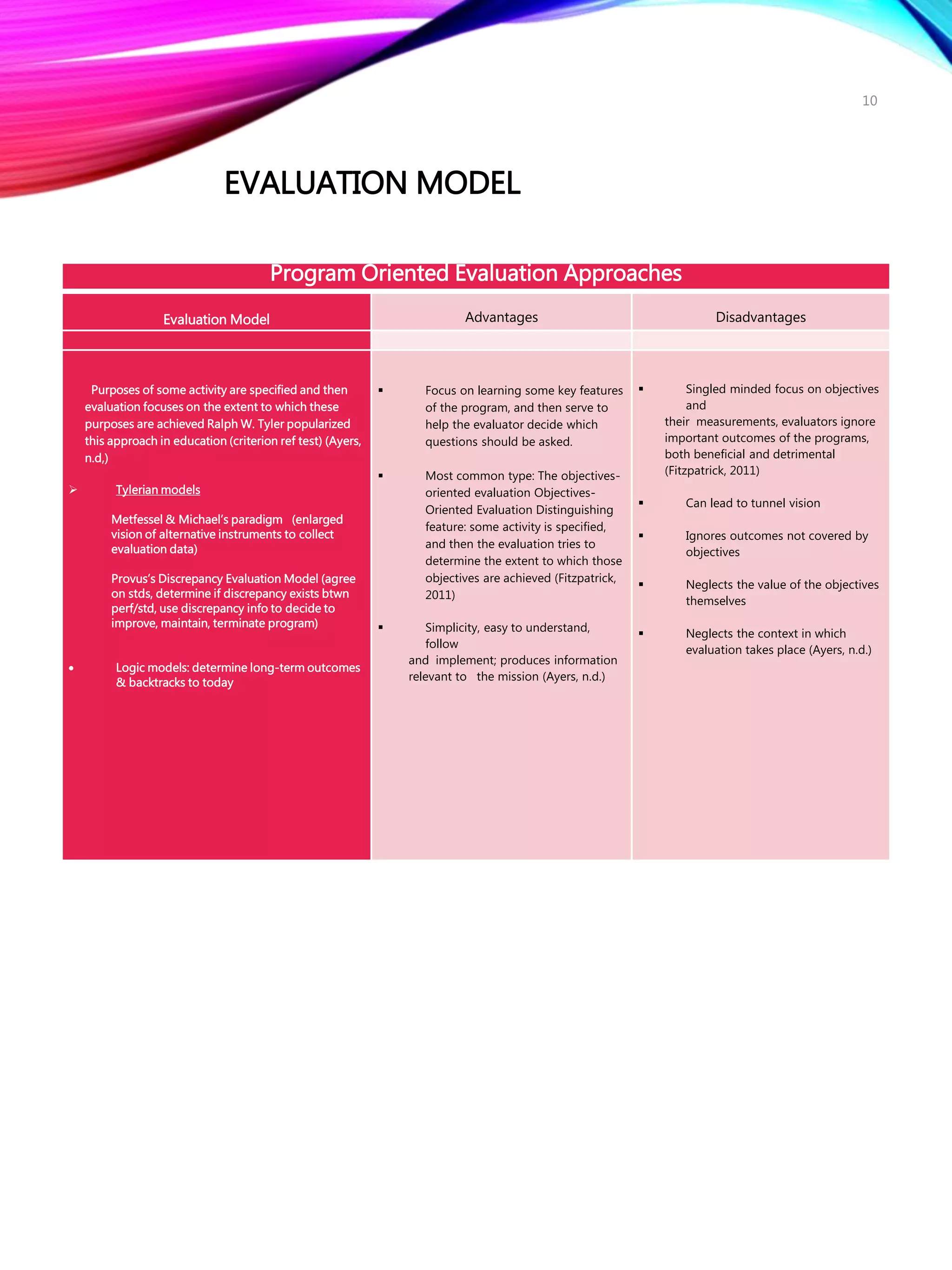
![Evaluation Model Advantages Disadvantages
Depend in inductive reasoning [observe, discover,
understand] Use multiple data sources [subjective,
objective, quant, quall] . Do not follow a standard
plan [process evolves as participants gain
experience in the activity] (Ayers, n.d.)
Responsive Evaluation Addressing
stakeholders’ concerns/issues
Case studies describe participants’ behaviors
Naturalistic Evaluation Extensive observations,
interviews, documents and unobtrusive
measures serve as both data and reporting
techniques
Credibility vs. internal validity (x-checking,
triangulation)
Applicability vs. external validity (thick
descriptions)
Auditability vs. reliability (consistency of
results)
Confirmability vs. objectivity (neutrality of
evaluation)
This approach encourages support for
representation of marginalized, oppressed and/or
powerless parties
Use stakeholders in different ways at
beginning or end or to help define
the
evaluation questions Stakes; Guba,
Lincoln were proponents of this
(Fitzpatrick,2011)
Emphasizes human element, gain
new insights and theories, flexibility,
attention to contextual variables,
encourages multiple data collection
methods, provides rich, persuasive
information, establishes dialogue
with and empowers quiet, powerless
stakeholders (Ayers, n.d.)
Too complex for practitioners (more
for theorists), political element,
subjective, “loose” evaluations, labor
intensive which limits number of
cases studied, cost, potential for
evaluators to lose objectivity
(Fitzpatrick,2011)
Participant– Oriented Evaluation
EVALUATION MODEL
11](https://image.slidesharecdn.com/educ6130-4programevaluationfinalproject-160619030333/75/Educ-6130-4-program-evaluation-final-project-11-2048.jpg)
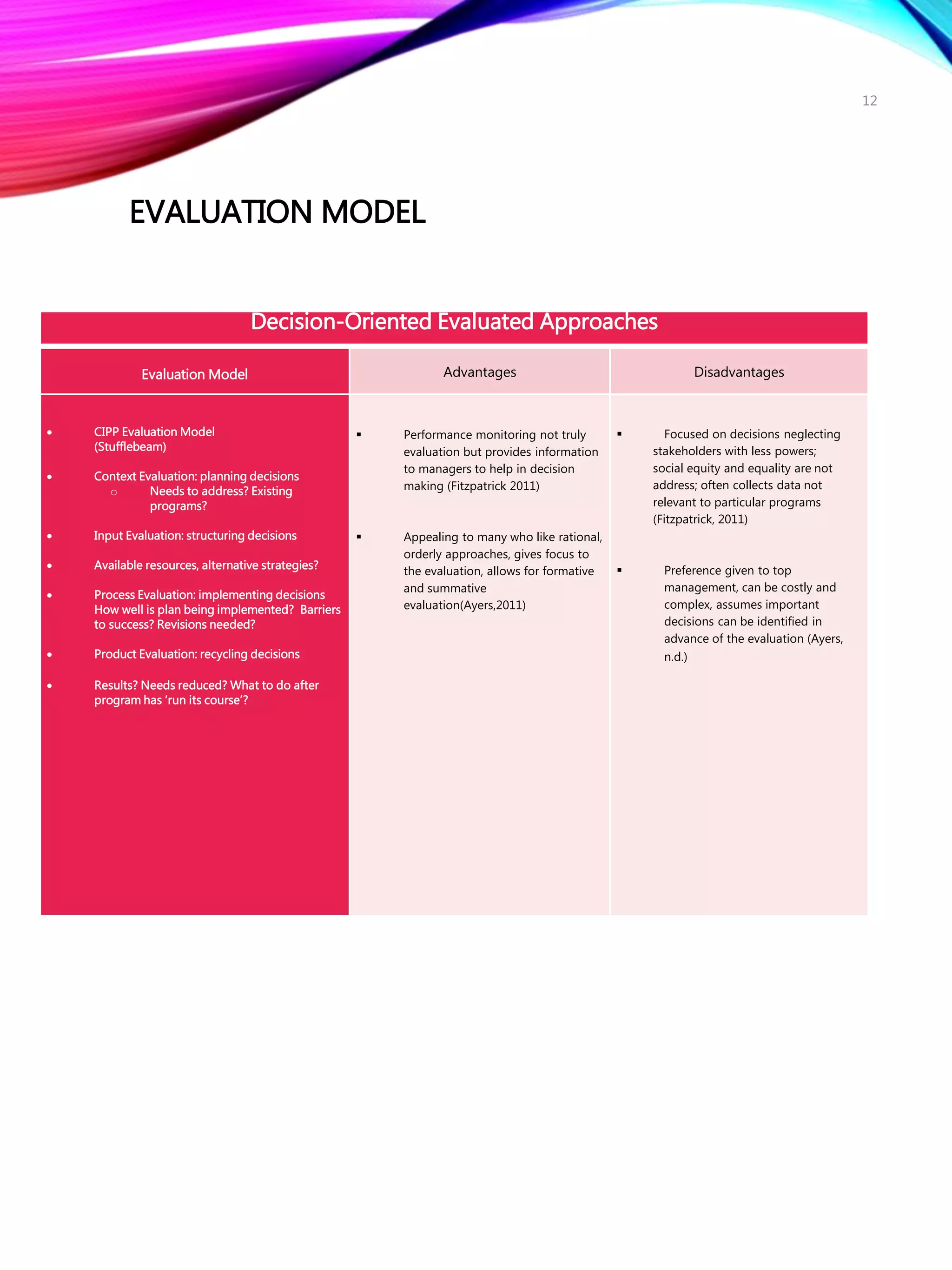
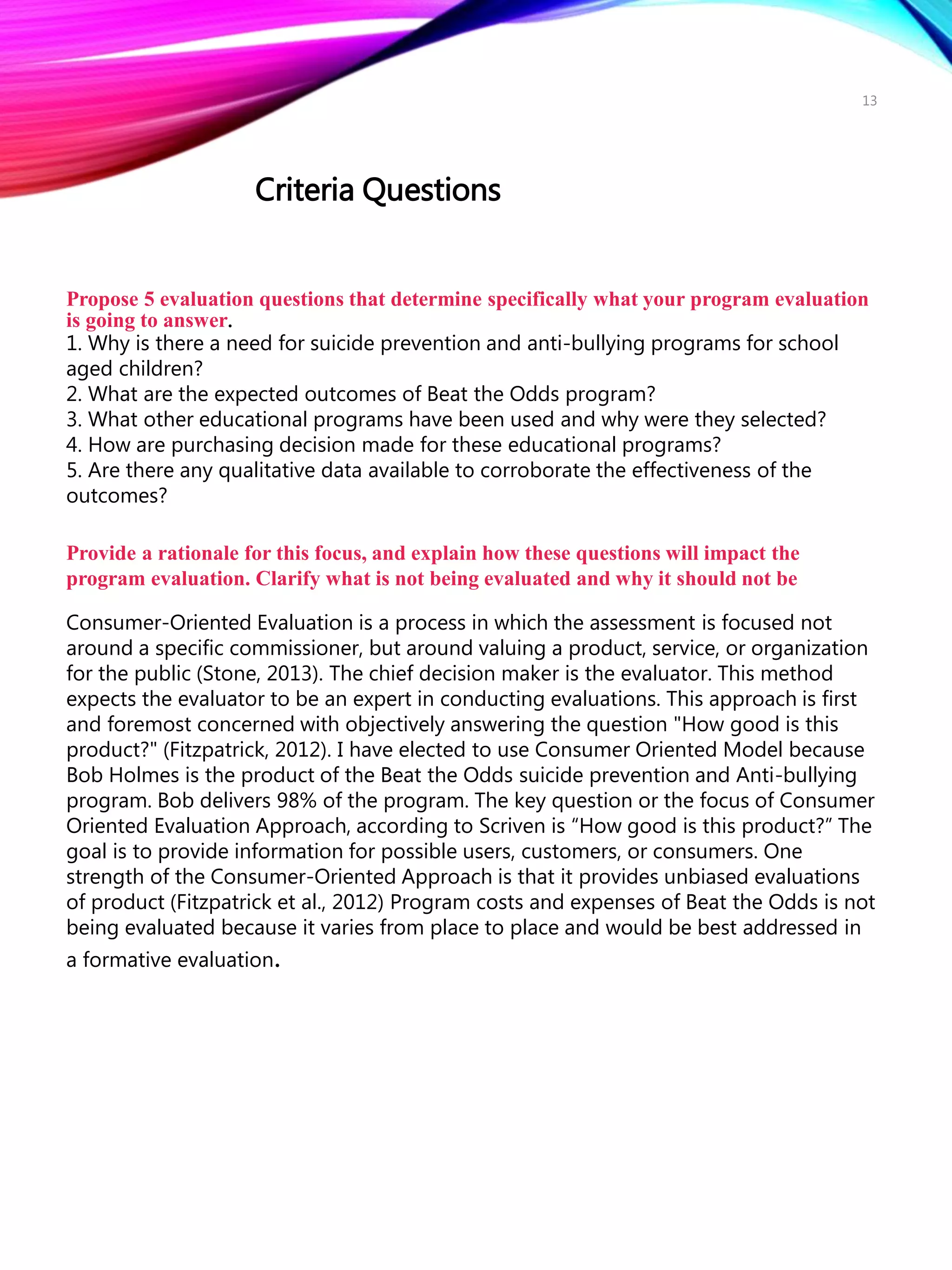
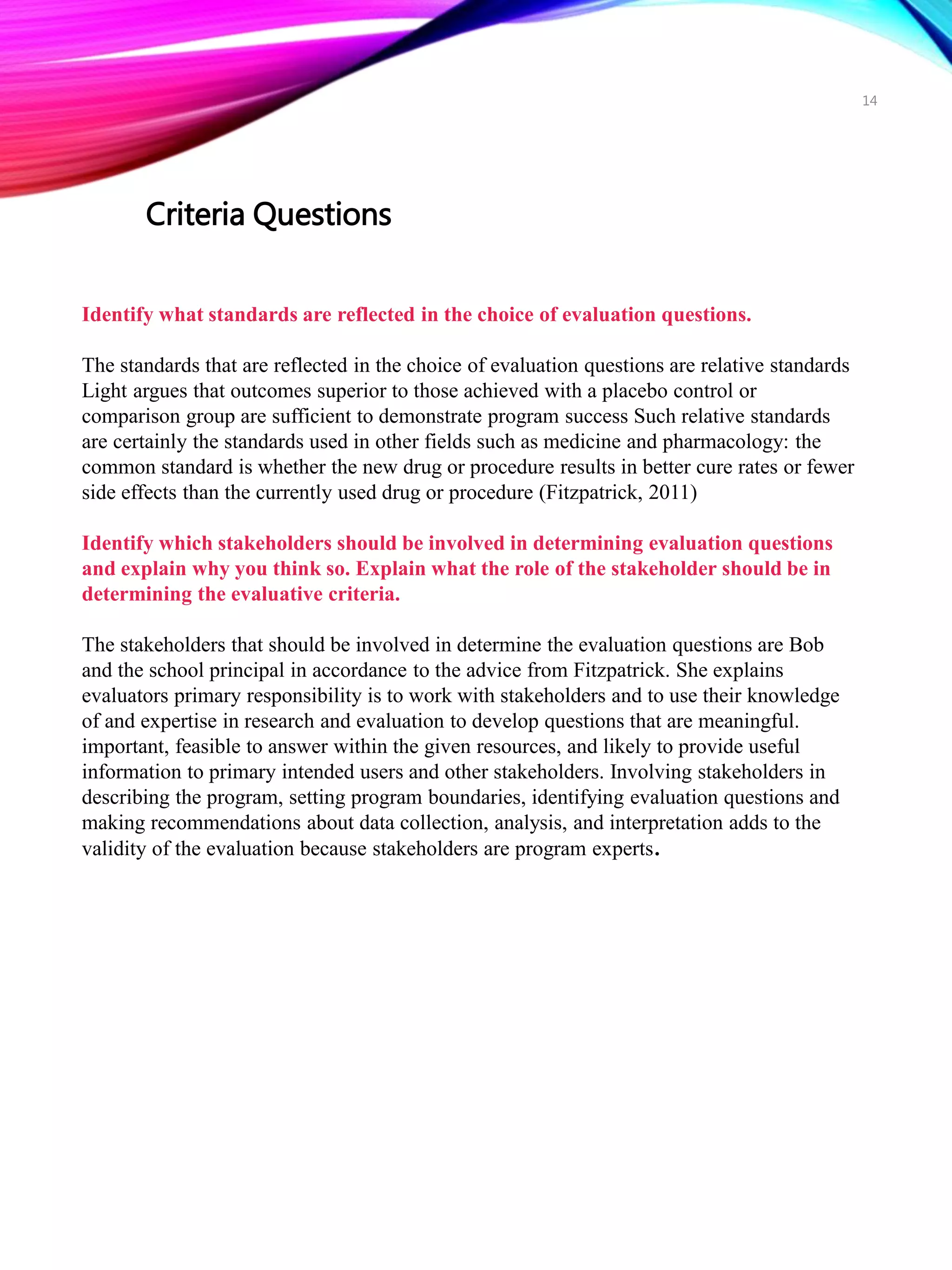
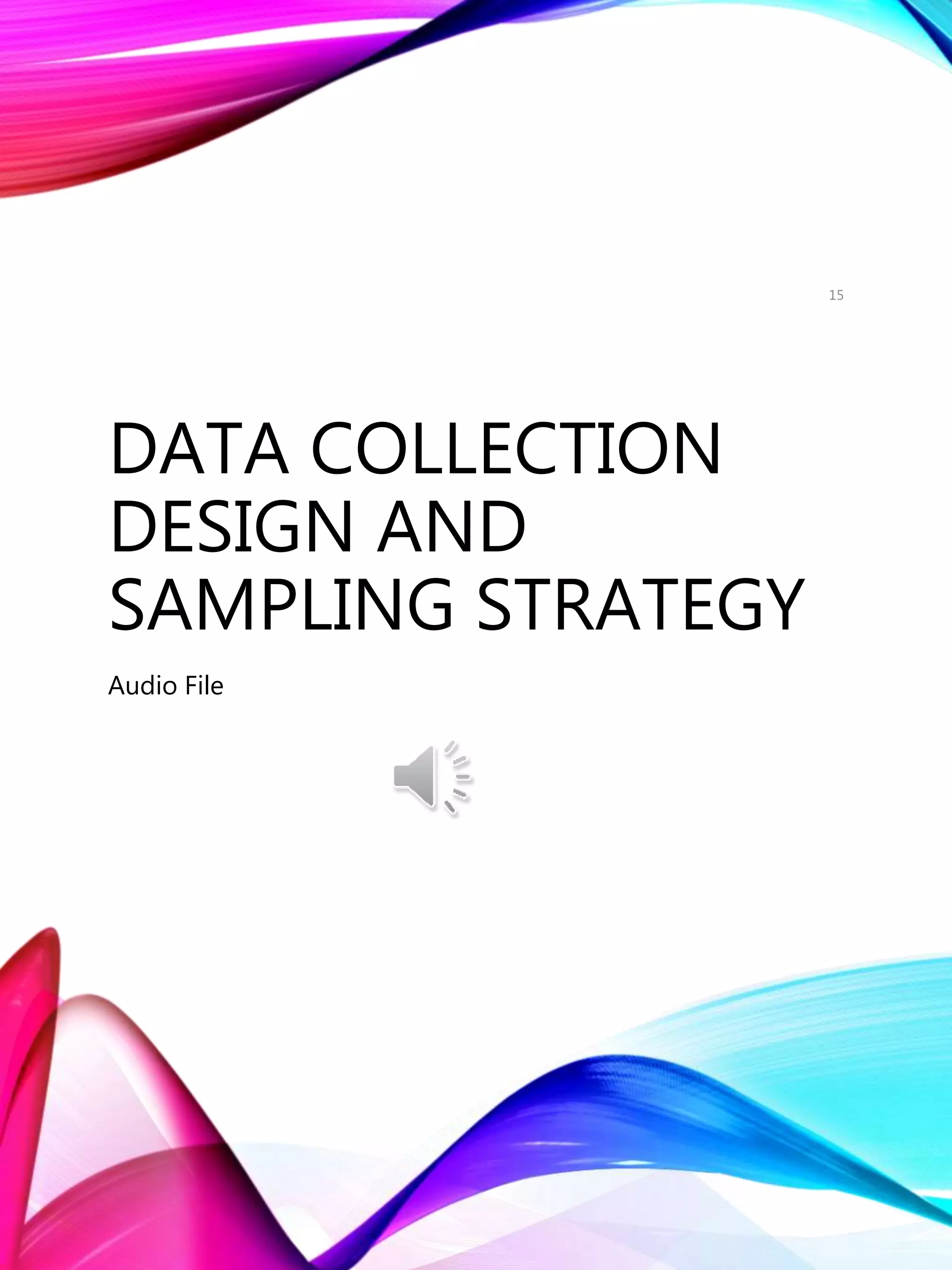
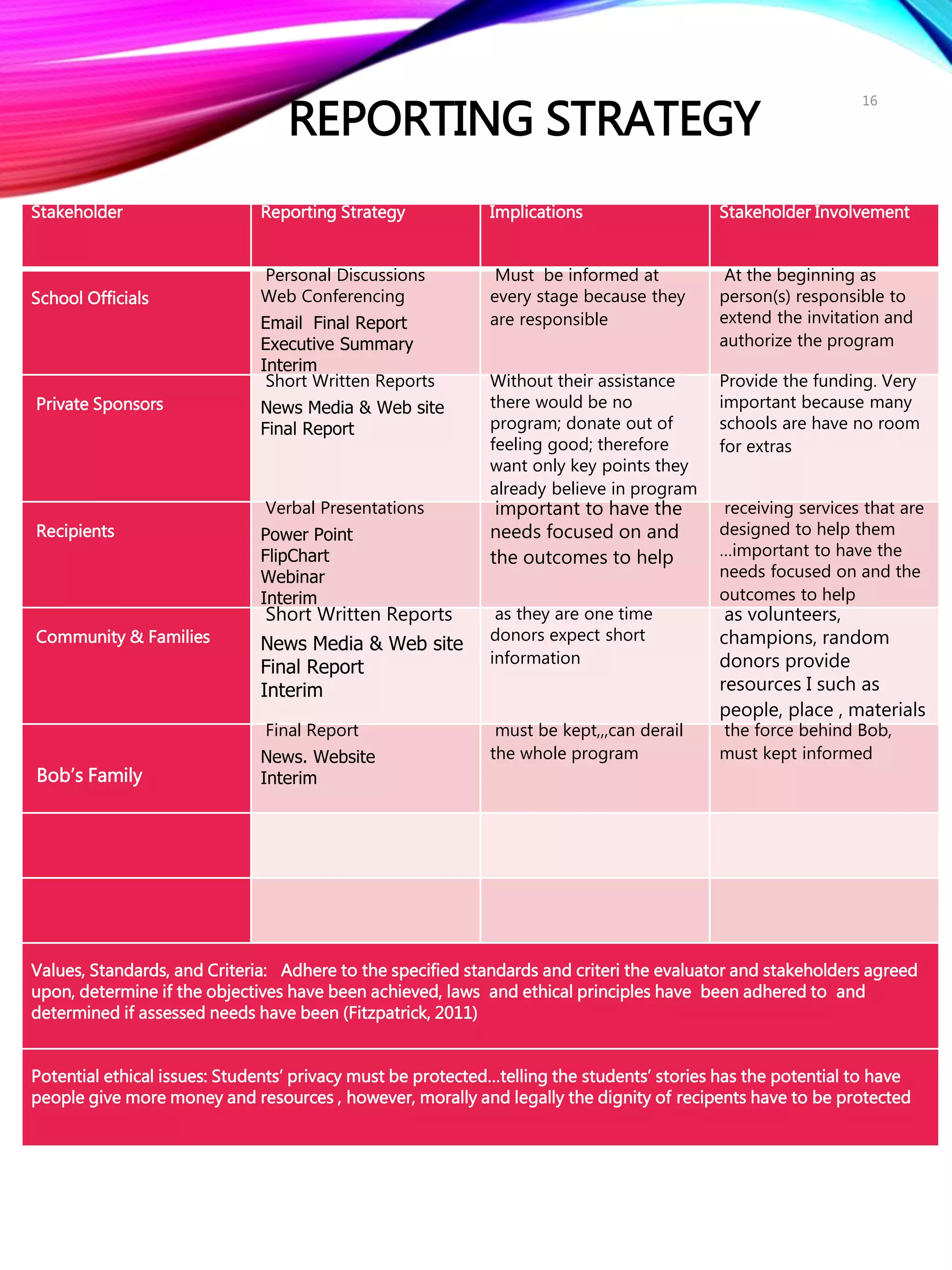

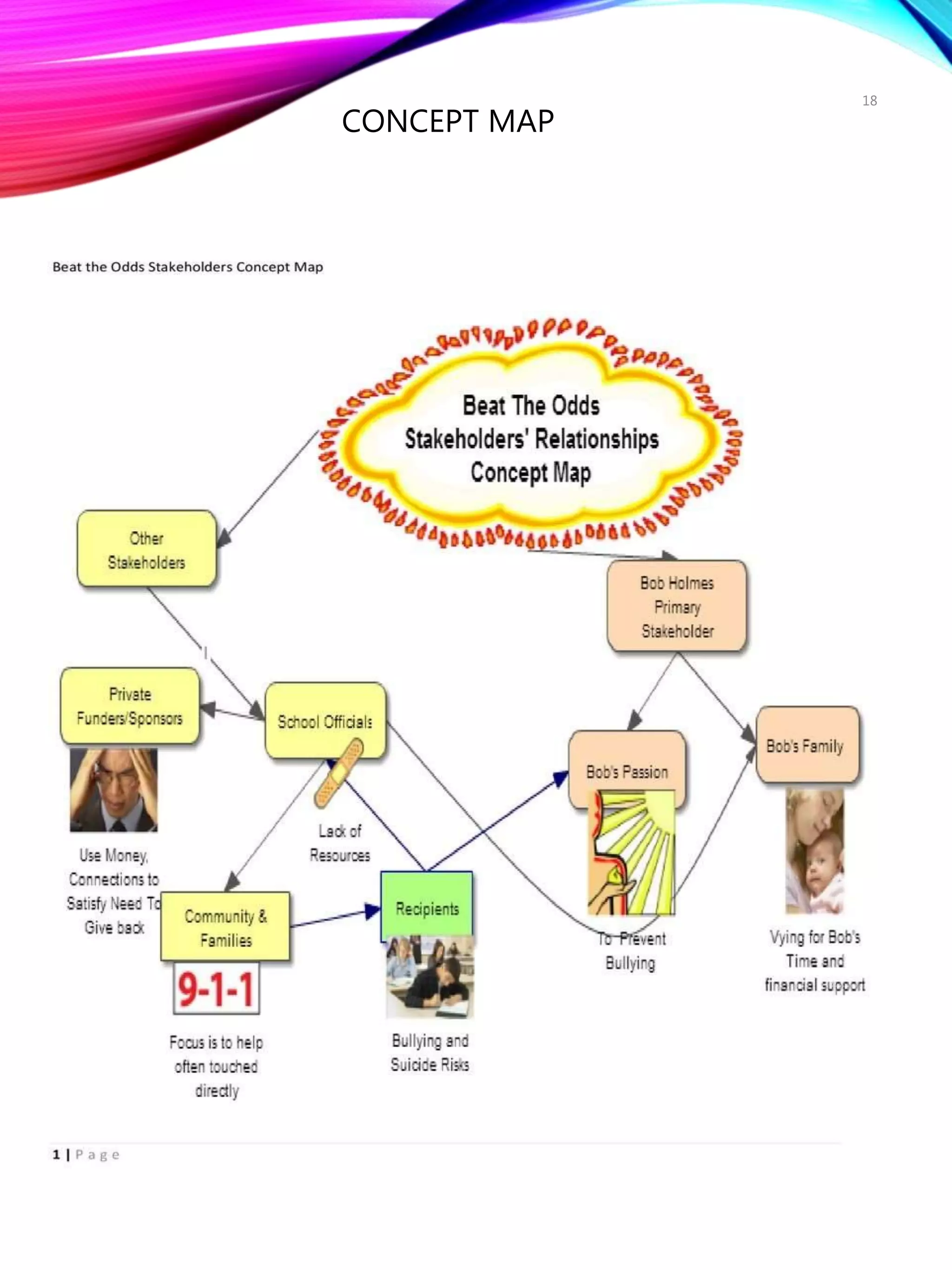
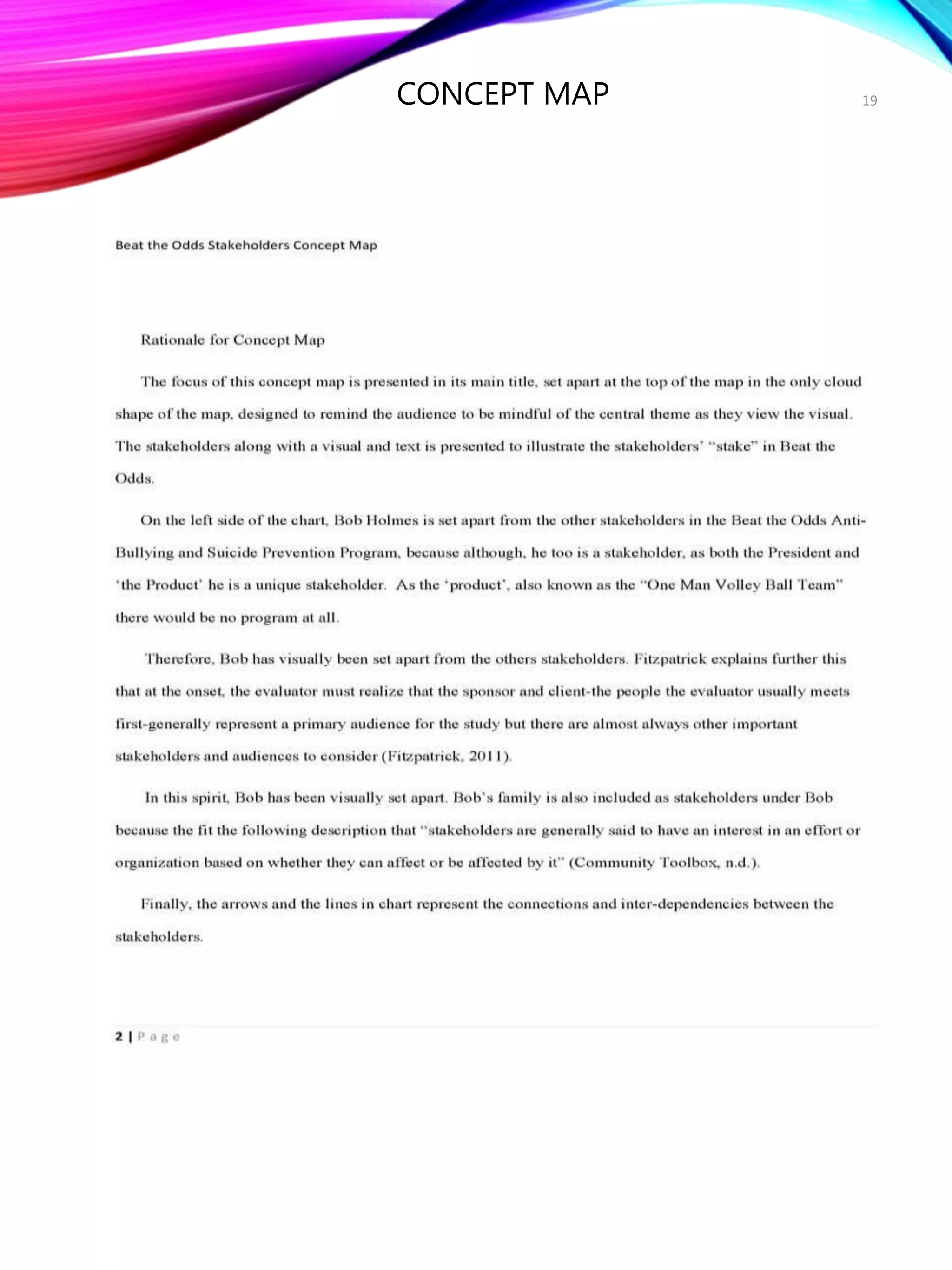
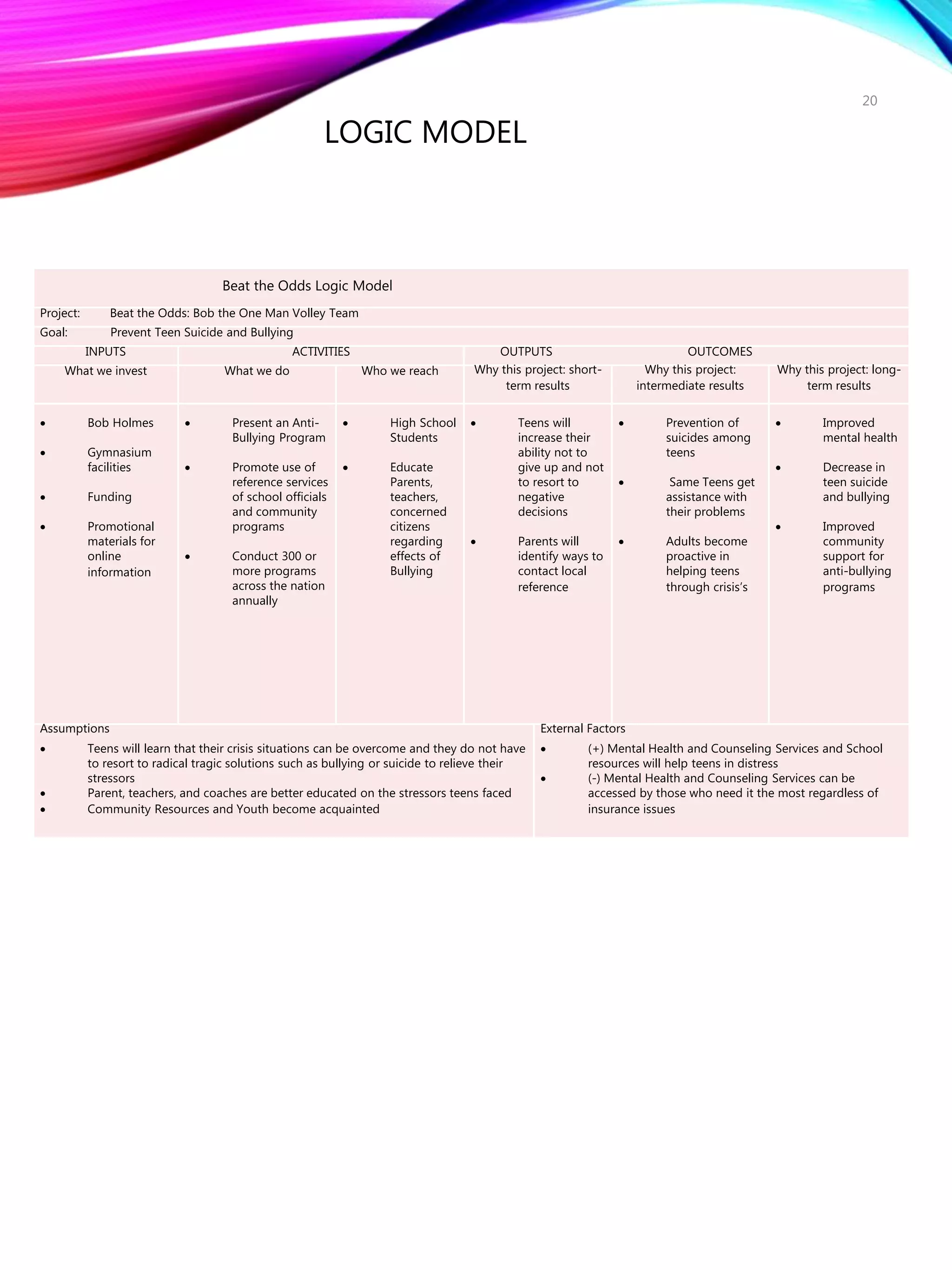
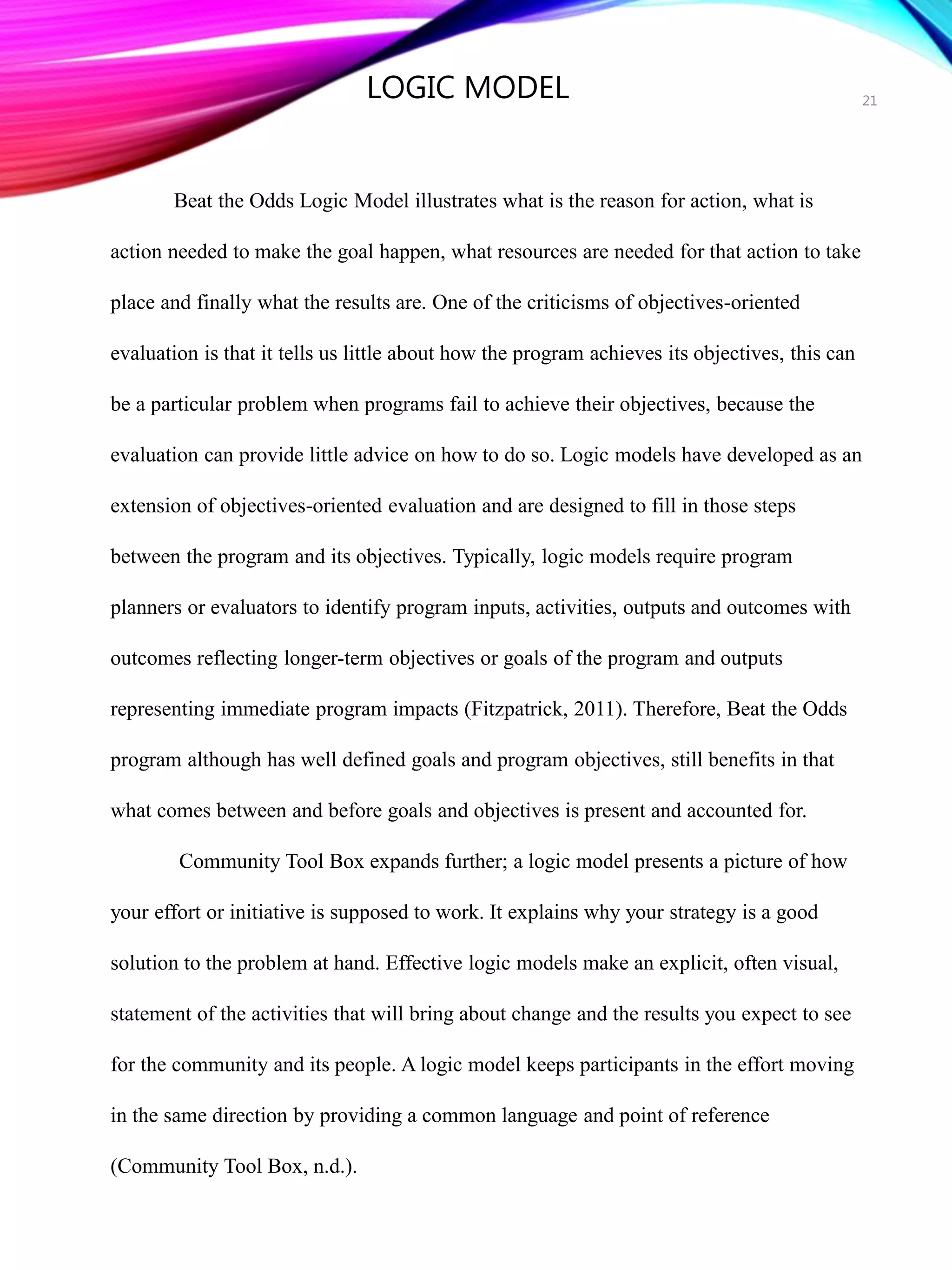
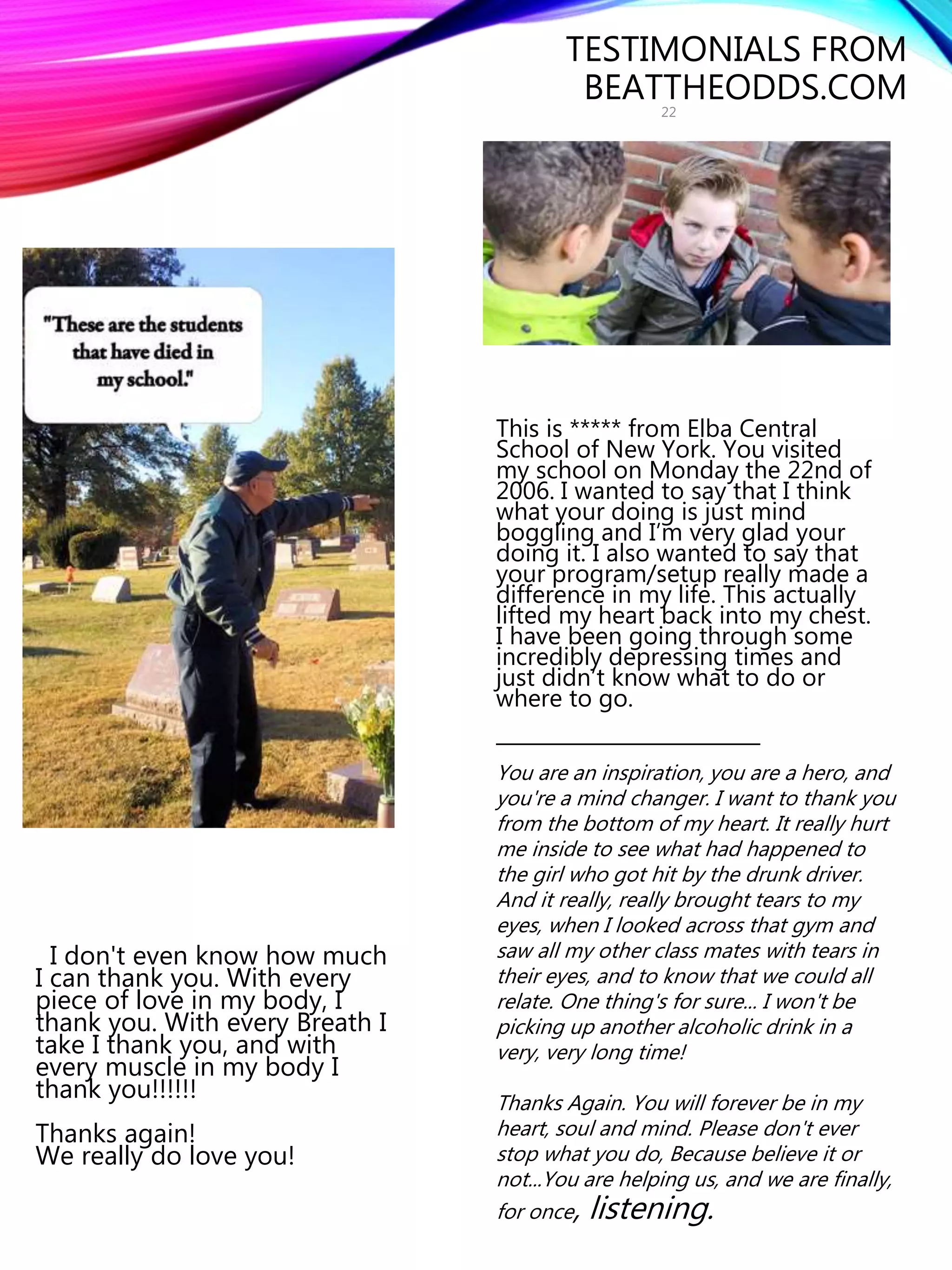

![That first group was tough," Holmes said after the event. "I thought, 'what did I get
myself into?'"
Using music, humor and over-the top showmanship to keep his audience engaged,
Holmes went head-to-head against four more teams.
Holmes won his second match at 15-9, and then drew it out to 21 points for a final
score of 21-15. His third match, a pick-up game with uniformed Airmen from the
audience, ended 15-2. His fourth match, played against Malmstrom's first sergeants,
ended 15-9 as another win for Holmes despite several heroic plays by the shirts. The
final match pitted him against Malmstrom's chief master sergeants and ended at 15-6
for a clean sweep by Holmes.
Holmes then took his microphone in hand to deliver his spoken message. Transforming
to his role as an inspirational speaker, he railed against suicide, alcohol and drug abuse,
and fear of failure. His key theme of 'beat the odds' was weaved throughout.
"Decide you won't ever quit," Holmes said. "Greatness is determined by what it takes to
stop you."
"I want you to go away from this place saying, 'I remember this guy's message more
than his game, and I remember that he put his heart into those teams but he certainly
gave a whole lot more heart in that message,'" Holmes said. "And if you go out of here
saying, 'I was helped by the message,' I'll say it was worth me leaving [home] to do
this."
"I address bullying, suicide, drugs and alcohol," Holmes said as he described his
program. He encourages his audiences to persevere and to always look to the future.
It is a message that parallels some of the key themes of Malmstrom's Wingman Day, a
base-wide day of resiliency training and positive motivation. Wingman Day is held twice
a year.
"What a great day to have Bob come, on our Wingman Day," Col. Tom Wilcox, 341st
MW commander, said to the audience.
24
News Media](https://image.slidesharecdn.com/educ6130-4programevaluationfinalproject-160619030333/75/Educ-6130-4-program-evaluation-final-project-24-2048.jpg)
